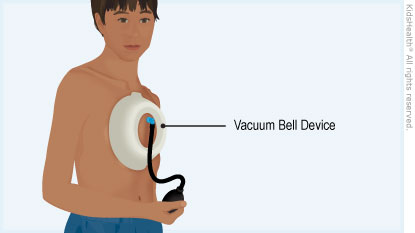- Home
- Parents Home
- Allergy Center
- Asthma Center
- Cancer Center
- Diabetes Center
- A to Z Dictionary
- Emotions & Behavior
- First Aid & Safety
- Food Allergy Center
- General Health
- Growth & Development
- Flu Center
- Heart Health
- Homework Help Center
- Infections
- Diseases & Conditions
- Nutrition & Fitness Center
- Play & Learn Center
- School & Family Life
- Pregnancy Center
- Newborn Center
- Q&A
- Recipes
- Sports Medicine Center
- Doctors & Hospitals
- Videos
- Para Padres
- Home
- Kids Home
- Asthma Center
- Cancer Center
- Movies & More
- Diabetes Center
- Getting Help
- Feelings
- Puberty & Growing Up
- Health Problems of Grown-Ups
- Health Problems
- Homework Center
- How the Body Works
- Illnesses & Injuries
- Nutrition & Fitness Center
- Recipes & Cooking
- Staying Healthy
- Stay Safe Center
- Relax & Unwind Center
- Q&A
- Heart Center
- Videos
- Staying Safe
- Kids' Medical Dictionary
- Para Niños
- Home
- Teens Home
- Asthma Center
- Be Your Best Self Center
- Cancer Center
- Diabetes Center
- Diseases & Conditions
- Drugs & Alcohol
- Expert Answers (Q&A)
- Flu Center
- Homework Help Center
- Infections
- Managing Your Medical Care
- Managing Your Weight
- Nutrition & Fitness Center
- Recipes
- Safety & First Aid
- School & Work
- Sexual Health
- Sports Center
- Stress & Coping Center
- Videos
- Your Body
- Your Mind
- Para Adolescentes
Pectus Excavatum: Vacuum Bell Device
What Is Pectus Excavatum?
Pectus excavatum is a condition in which the breastbone (sternum) and several ribs are caved in. This happens because these ribs and the breastbone grow abnormally in an inward direction.
Health care providers sometimes suggest that kids use a vacuum bell to help correct pectus excavatum without surgery.
What Is a Vacuum Bell?
A vacuum bell is a rubber bell- or cup-shaped device that connects to a pump. You place the device on the front of the chest and use the pump to suck the air out of the device. This creates suction, or a vacuum, that pulls the chest and breastbone forward. Over time, the chest wall and breastbone stay forward on their own and hold a new shape.

How Do We Use the Vacuum Bell at Home?
Your child's health care provider will go over the instructions with you about how to use the vacuum bell at home.
In general:
- Place the device on the chest. The center of it should be on top of the deepest part of your child's pectus excavatum.
- Press the device onto the chest to form a seal.
- Use the hand pump to suck the air out of the device.
- Remove the hand pump and plug the end of the tubing. This way, your child can move around and the air does not leak out of the device.
- Leave the device on your child's chest for the amount of time recommended by your health care provider.
- Lift the device off the chest when the time is up.
Kids under 10 years old usually need help from a caregiver to use a vacuum bell. Most older kids can use the vacuum bell on their own.
How Long Do Kids Need to Wear the Vacuum Bell?
At first, the vacuum bell should be worn about 30 minutes, twice a day. Over the following 4–6 weeks, you'll slowly increase the amount of time your child wears it, up to about 2 hours twice a day (or as recommended by your health care provider).
Most kids need to use the vacuum bell for a year or more.
Are There Any Problems With Using a Vacuum Bell?
Usually, the vacuum bell causes no problems except a little redness or bruising where it attaches to the chest. This usually goes away on its own after a few hours. Sometimes a health care provider will lower the amount of suction to lessen the chance of redness or bruising.
Less commonly, someone can have back pain or a burning or prickly feeling in the arms while wearing the vacuum bell. If this happens, take off the vacuum bell and try a lower pressure in a few hours.
Is the Vacuum Bell Painful?
It can take some time to get used to the vacuum bell. Some kids might feel a bit of discomfort when the device is put on, but most get used to it pretty quickly.
How Can Parents Help?
Most kids do well with using the vacuum bell. But some kids struggle with it. Parents can work with their child to find ways to make it work. If a child feels embarrassed about the vacuum bell, for example, they might want to wear a baggy shirt while the device is on.
It’s OK for kids to occasionally have "time off" for important events, like a dance or beach day. Some kids feel better about using the vacuum bell if they know they will get a reward at the end of the week, like going to a movie or being able to pick a special meal.
What Else Should I Know?
The care team is a resource for parents and kids. They can answer any questions and help kids get the best results from the vacuum bell.